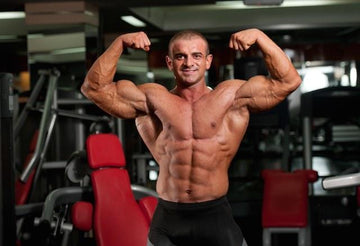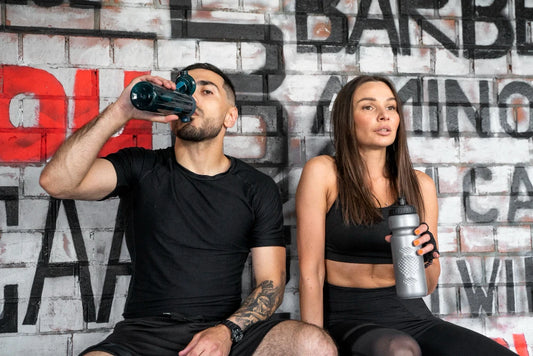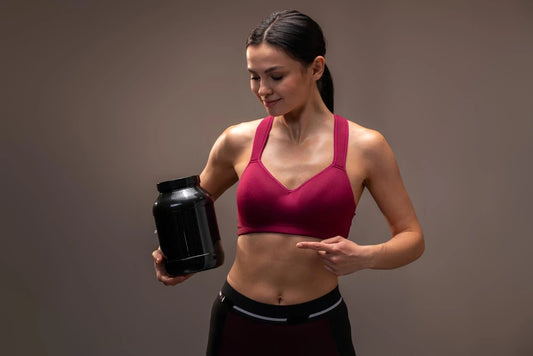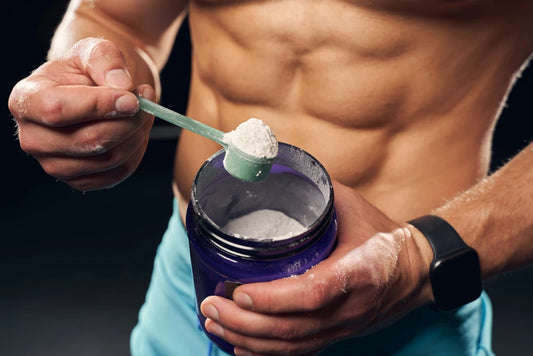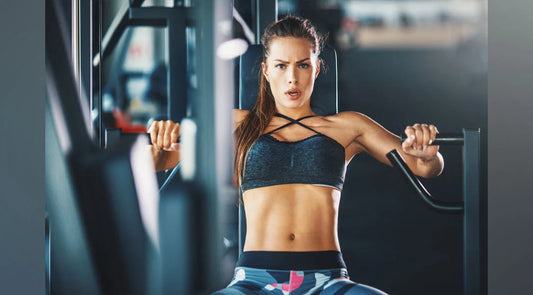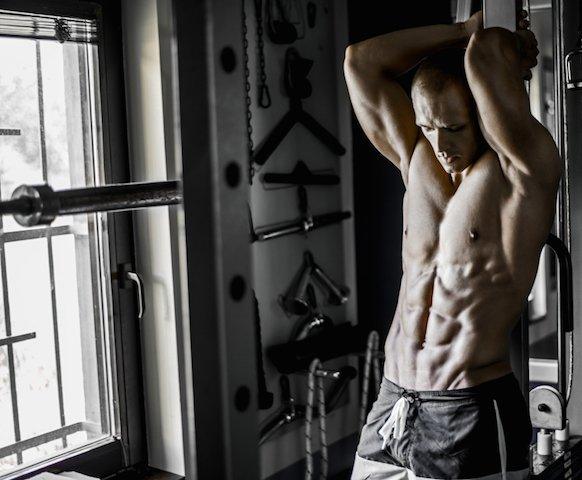

How to Burn Belly Fat
Table of Contents
How to Burn Belly Fat
By: Christian Finn

Of all the e-mails I get sent every day, by far the most common — from women — are questions about the best way to lose belly fat. A pot belly… love handles… the spare tire… call it what you will. It seems to be the area of your body that you’d really like to do something about.
You’ve probably heard that belly fat is harder to lose than fat stored in other parts of your body. But that’s only partially true, and depends to a large extent on which type of abdominal fat you’re talking about. There are two main types of fat in the stomach area. Visceral fat is stored deep inside your body. It surrounds and protects your internal organs. You can’t actually see visceral fat, as it’s underneath your abdominal muscles. Subcutaneous fat, on the other hand, is stored just under your skin. It’s the stuff you can pinch. Visceral fat does tend to accumulate more quickly than subcutaneous fat. But it’s also relatively easy to get rid of. That’s because it’s less sensitive to the anti-lipolytic effects of insulin, as well as being more sensitive to lipolytic stimuli. Visceral fat also has a lot of blood flowing through it. This makes it easier for the various hormones that trigger lipolysis to get to the fat cells in the first place. It also helps transport fat away from the fat cell so that it can be burned off elsewhere. However, while visceral fat isn’t particularly hard to get rid of, subcutaneous fat is another story entirely. In particular, fat stored around the side of your waist and lower back, as well as the lower part of the abdominals, can be very difficult to shed.
It’s often said that you should do aerobic exercise to lose fat, and train with weights if you want to build muscle. But that statement is only partially true.
Think of your belly fat like a bank account. But instead of storing money, it stores energy. If you want the amount of money stored in your bank account to go down, you have to spend more than you’re earning. In much the same way, getting rid of belly fat is all about creating an energy deficit by “spending” more energy than you get from your diet. The only true requirement when it comes to losing fat is an energy deficit. And you can create that deficit with diet, resistance exercise, or aerobic exercise. You can also use a combination of all three.
Lifting weights isn’t just for people who want to gain muscle, and will improve your body composition in two ways.

Firstly, if you don’t do some form of resistance exercise while you diet, much of the weight you lose will come from muscle as well as fat. Losing muscle means that you’ll lose weight more quickly, as one pound of muscle contains a lot less energy than one pound of fat . But you’ll just end up looking like a slightly smaller version of your current self, with many of the “flabby bits” still intact. Second, with a properly designed strength-training program, you’ll burn fat both during and after your workout.
In one study, researchers from East Carolina University had a group of eight subject’s lift weights for 40-45 minutes . Each subject had a microdialysis probe inserted into their belly. This allowed the researchers to measure the amount of fat that was released from fat cells under the skin before, during, and after the workout.
Here’s what they found:
Metabolic rate was over 10% higher after the subjects had lifted weights (104 calories per hour) compared with the same time point on the control day (95 calories per hour). The rate of fat burning was doubled (10 versus 5 grams per hour) following resistance exercise. But that’s not all. The amount of fat being released from fat cells in the stomach was around 80% higher both during and immediately after the workout.
In other words, lifting weights will burn fat, and some of that fat will come straight from your belly.
It’s true that many studies to compare resistance with aerobic exercise show that, on the whole, aerobic exercise works a lot better for getting rid of belly fat .
However, many of these studies use resistance training programs with a very low metabolic demand — the exercises are performed on machines, many of them are single-joint movements that isolate small muscle groups, and the overall training volume is relatively low. A routine based on exercises with a high metabolic demand is another story entirely. I’m talking about squats, deadlifts, rows, chin-ups (or pulldowns) and presses (bench press and overhead press), using a weight that limits you to between 5 and 15 repetitions per set. With this type of training, you’ll burn calories both during and after the workout.
What about so-called “fat burning” foods?

One question that seems to appear in my inbox on an almost daily basis centers on the effect that individual foods have on weight loss.
It seems people want to hear that there are “good” foods and “bad” foods, and if you want to drop fat, all you need to do is eat less of the bad ones and more of the good ones. I hate to be the one to break it to you, but the idea there are special foods (blueberries, dark chocolate, avocados and so on) that will somehow burn fat is complete nonsense. But it’s the sort of nonsense that seems to pop up every so often on daytime TV or in the happy-clappy health magazines when they’ve got no more “declutter your life” or “I’m okay and you’re okay” articles left to publish. There are certain “hot” foods (such as red pepper) that give your metabolism a lift . But the overall effect is relatively small, and it’s debatable whether the short-term increase in metabolism has much of an impact on fat loss over time. At the risk of repeating myself, getting rid of belly fat requires an energy deficit, and it’s your overall diet rather than any individual food that will determine your rate of fat loss.
That being said, there is one nutrient – protein – that will make it a lot easier for you to burn off belly fat.
Studies show that protein does a better job at filling you up than carbohydrate or fat. Eat a protein-rich breakfast, for example, and chances are that you won’t eat as much food for lunch.
One study where dieters were told to eat roughly twice as much protein as normal . The researchers found that eating more protein led to a spontaneous reduction in calorie intake that lasted for the length of the study. In fact, calorie intake dropped by an average of 441 calories per day.
Protein also has a “muscle sparing” effect during fat loss. If you don’t get enough protein while you’re on a diet, you’ll end up dropping muscle as well as fat. Finally, protein increases postprandial thermogenesis to a greater extent than carbohydrate or fat .

A chocolate bar (mainly carbs and fat) and a chicken breast (mainly protein) might have the same number of calories. But because the thermic effect of protein is higher than that of carbs or fat, your body uses up more energy processing the chicken than it does the chocolate bar. In other words, some of the energy in each gram of protein is “wasted” while it’s digested and metabolized. Fat, protein and carbohydrate are different things, and your body handles them differently. This affects the total number of calories your body can extract from each one. The composition of your diet matters. It affects things like hormone levels, appetite, energy expenditure and so on, all of which will have an influence on how much of the weight you lose comes from muscle or fat.
As a rule-of-thumb, the quantity of calories in your diet dictates how much weight you lose, while the quality of those calories affects where that lost weight comes from.

In other words, you can’t ignore the macronutrient content of a diet and expect to see an identical change in body composition based on calorie values alone. But no matter which way you look at it, losing belly fat still requires an energy deficit. Don’t allow yourself to be seduced into following an overly complicated diet masquerading under the guise of a “new and revolutionary” approach to weight loss. Just four steps of these steps alone – creating a calorie deficit, eating more protein, and combining strength training with cardio – has been shown to work almost twice as well as the traditional high-carbohydrate diet + cardiovascular exercise approach to losing abdominal fat .
Some say that a rise in cortisol levels caused by too much exercise will actually make your belly bigger.
This is based on research showing an association between stress-induced cortisol secretion and abdominal fat . In scientific lingo, visceral fat cells are more “metabolically active” than subcutaneous fat cells. Not only are they more sensitive to the effects of circulating cortisol than fat cells in other parts of your body, they also have more receptors that respond to cortisol by activating enzymes that store fat . However, the link between belly fat and cortisol has little to do with the short-term rise in cortisol that occurs during and after exercise.
The real problems come when cortisol levels are elevated for prolonged periods, which is often due to constant physiological and/or psychological stress.
People who secrete large amounts of cortisol in response to stress (hypersecreters) are the ones most likely to eat more as a way of dealing with that stress. When they’re given a choice of foods to eat, they will usually pick the stuff that’s high in fat and sugar. So if you are a cortisol hypersecreter, there’s a good chance that you’re going to crave high sugar or high fat “comfort food” whenever your level of stress starts to boil over. Not only that, but many of the extra calories you eat during a stress-induced binge are going to be stored in your belly.
But just to repeat, these problems are linked with prolonged exposure to high levels of cortisol. The short-term rise in cortisol during and after exercise is not something you need to worry about.

I know there are supplements out there promising to help you lose belly fat by lowering cortisol levels. The companies selling these products have taken a small piece of research, twisted it round and used it to sell their products. They’ll tell you “it’s not your fault” that you’re fat. It’s all down to cortisol. Just take this pill, your cortisol levels will drop and the belly fat will almost magically disappear. This is, of course, complete nonsense. Cortisol does have the potential to cause weight gain, but that’s mainly because of the effect it has on your appetite. It won’t cause you to gain weight in the absence of an energy surplus, nor to lose weight in the absence of an energy deficit.
Are there any specific exercises that will get rid of belly fat faster than others?

The short answer to this question is no. Crunches, sit-ups, or any of the various “drawing in the belly button” exercises are virtually useless when it comes to losing belly fat. Researchers from Illinois took a group of 24 participants and assigned them to one of two groups . The first group did nothing, while group two performed seven abdominal exercises (2 sets x 10 repetitions), five days a week for six weeks. A grand total 4,200 repetitions of various abdominal exercises over a six-week period had “no significant effect” on the amount of fat stored around the stomach. Please don’t waste your time trying to burn off stomach fat by twisting and crunching it away.
ABOUT CHRISTIAN FINN
Christian Finn holds a master’s degree with distinction in exercise science, is a former personal trainer and has been featured on BBC TV and radio, for more information about Christain Finn, visit www. https://muscleevo.net/
References
1. Arciero PJ, Gentile CL, Martin-Pressman R, Ormsbee MJ, Everett M, Zwicky L, Steele CA. (2006). Increased dietary protein and combined high intensity aerobic and resistance exercise improves body fat distribution and cardiovascular risk factors. International Journal of Sport Nutrition and Exercise Metabolism, 16, 373-392
2. Epel ES, McEwen B, Seeman T, Matthews K, Castellazzo G, Brownell KD, Bell J, Ickovics JR. (2000). Stress and body shape: stress-induced cortisol secretion is consistently greater among women with central fat. Psychosomatic Medicine, 62, 623-632
3. Hall KD. (2008). What is the required energy deficit per unit weight loss? International Journal of Obesity, 32, 573-576
4. Ismail I, Keating SE, Baker MK, Johnson NA. (2012). A systematic review and meta-analysis of the effect of aerobic vs. resistance exercise training on visceral fat. Obesity Reviews, 13, 68-91
5. Jéquier E. (2002). Pathways to obesity. International Journal of Obesity, 26, S12-S17
6. Ormsbee MJ, Thyfault JP, Johnson EA, Kraus RM, Choi MD, Hickner RC. (2007). Fat metabolism and acute resistance exercise in trained men. Journal of Applied Physiology, 102, 1767-1772
7. Wajchenberg BL. (2000). Subcutaneous and visceral adipose tissue: their relation to the metabolic syndrome. Endocrine Reviews, 21, 697-738
8. Weigle DS, Breen PA, Matthys CC, Callahan HS, Meeuws KE, Burden VR, Purnell JQ. (2005). A high-protein diet induces sustained reductions in appetite, ad libitum caloric intake, and body weight despite compensatory changes in diurnal plasma leptin and ghrelin concentrations. American Journal of Clinical Nutrition, 82, 41-48
9. Vispute SS, Smith JD, LeCheminant JD, Hurley KS. (2011). The effect of abdominal exercise on abdominal fat. Journal of Strength and Conditioning Research, 25, 2559-2564
10. Ludy MJ, Mattes RD. (2011). The effects of hedonically acceptable red pepper doses on thermogenesis and appetite. Physiology & Behavior, 102, 251-258
MUSCLE MEDIA MAGAZINE FOR MEN
The premier source of training, nutrition, supplements, fat loss and health for men.



